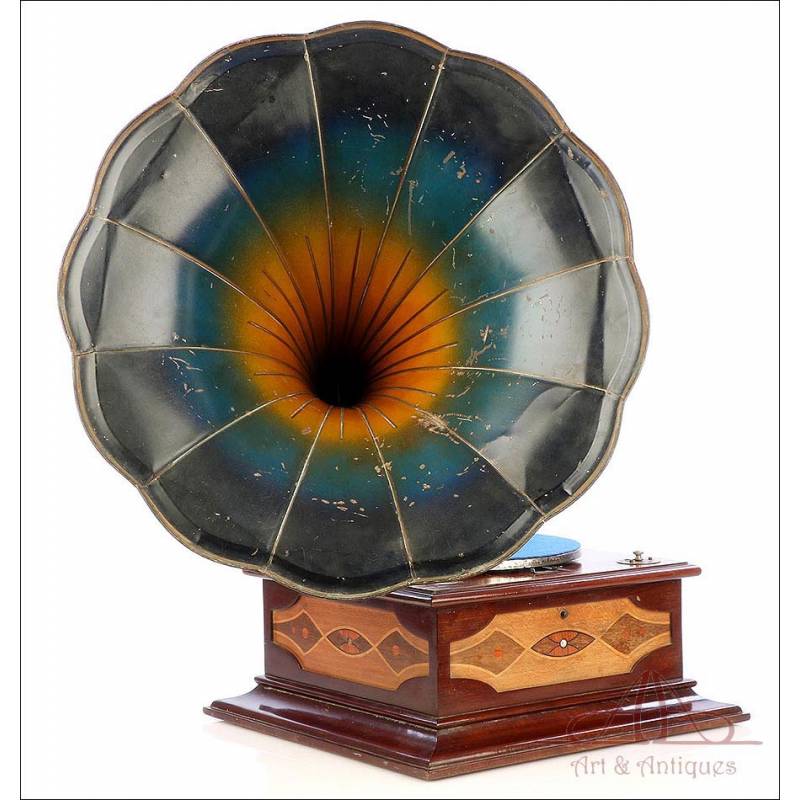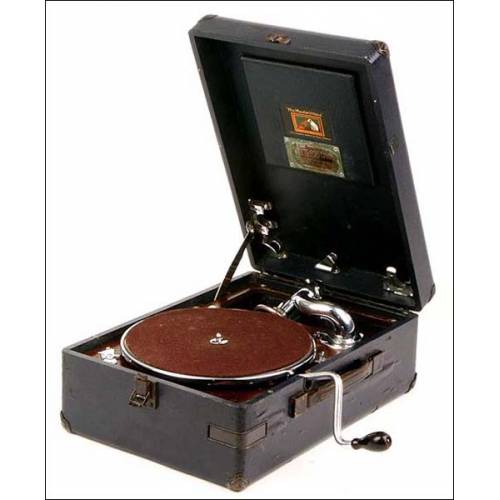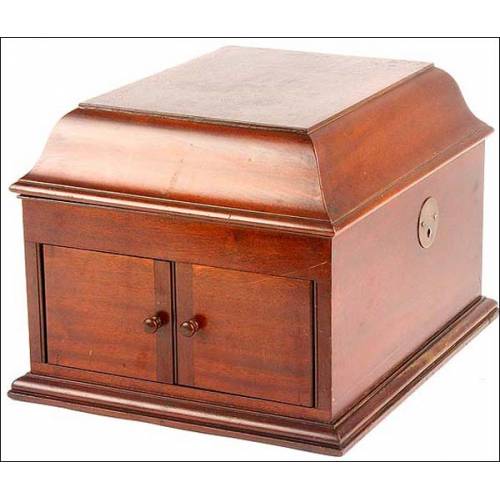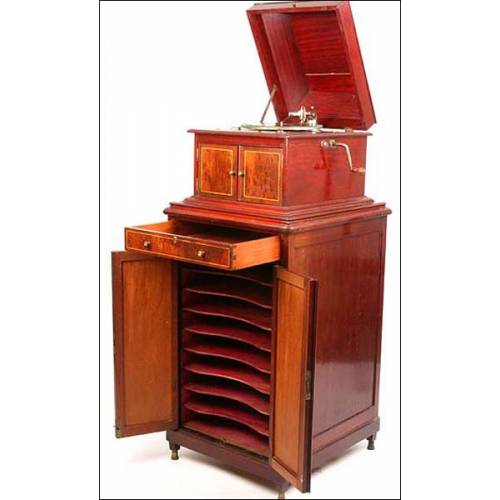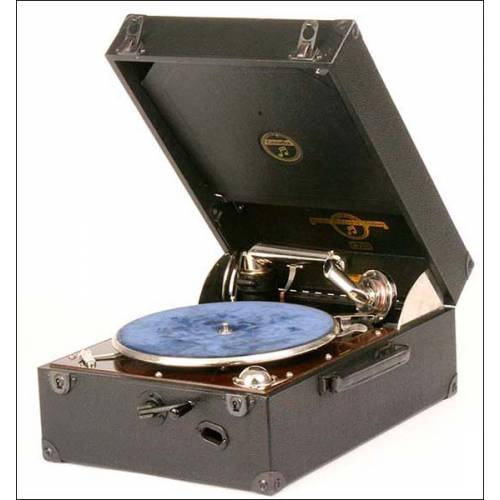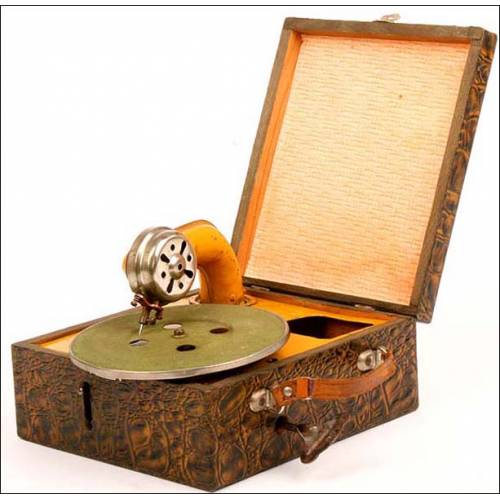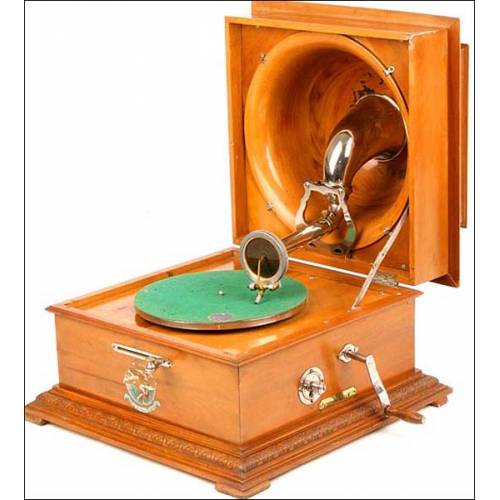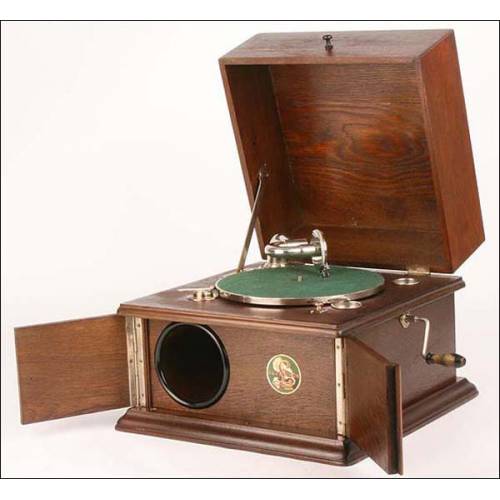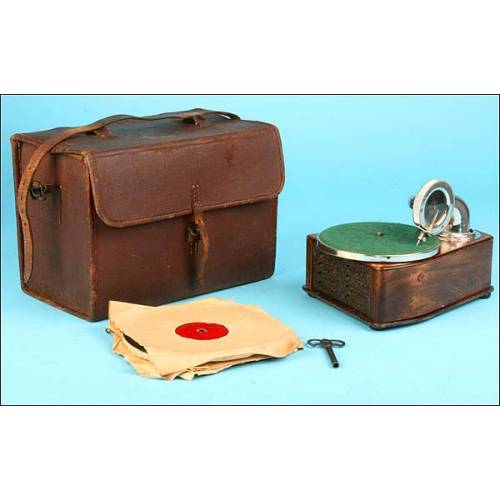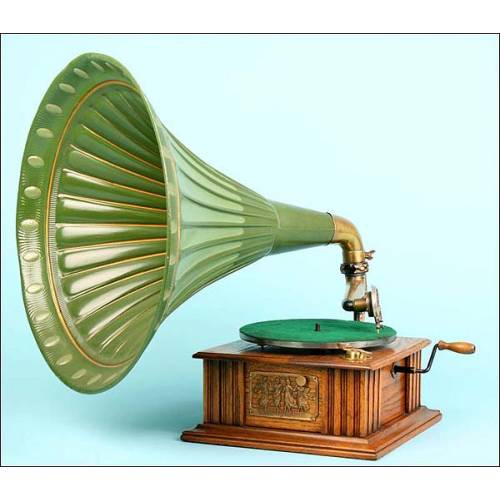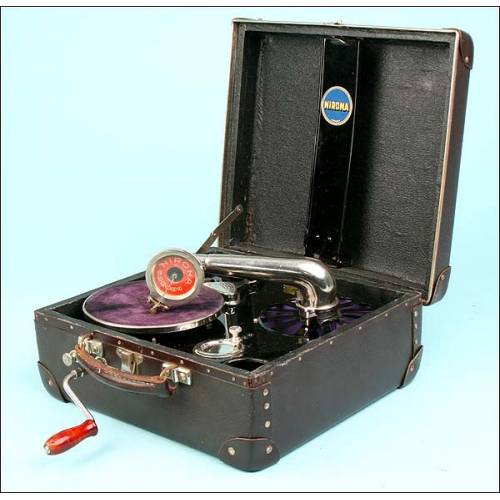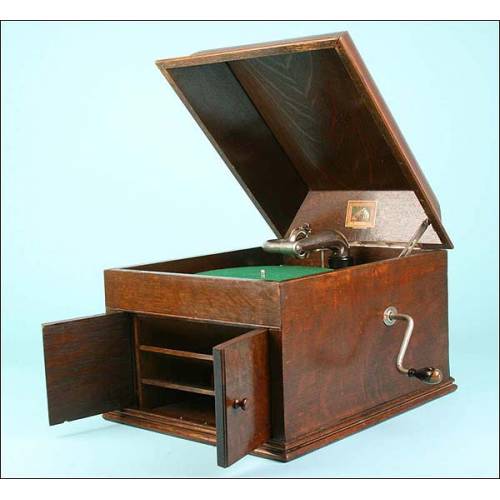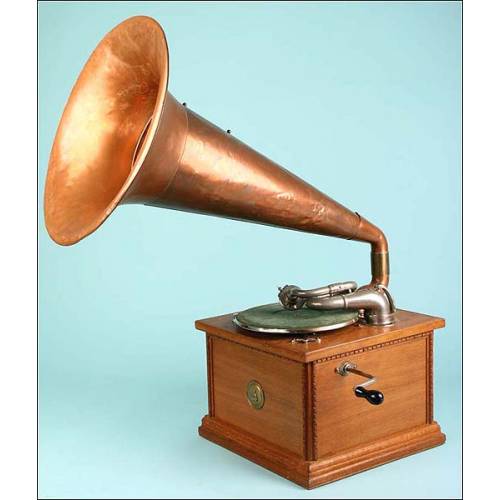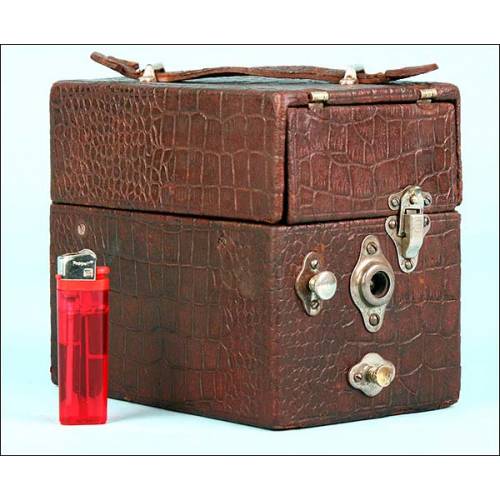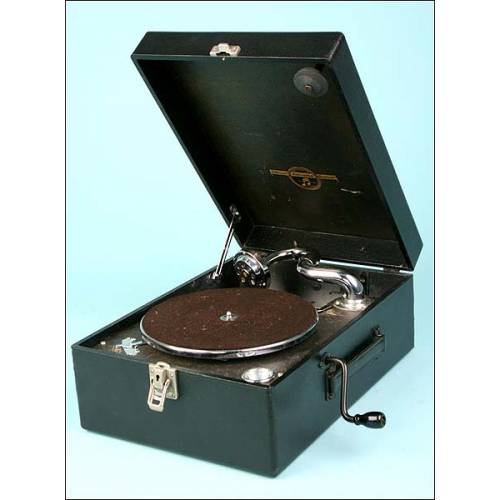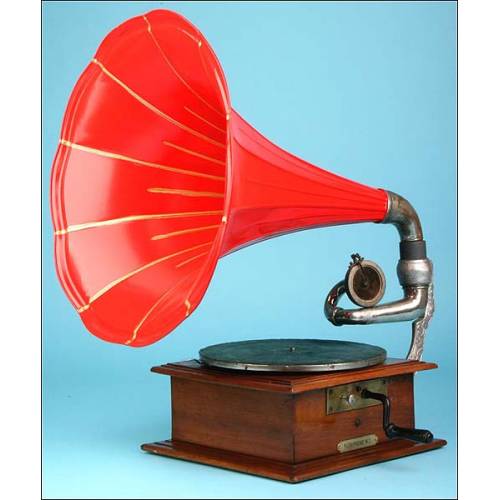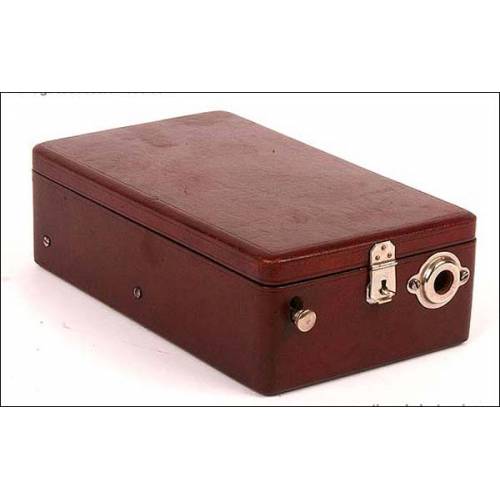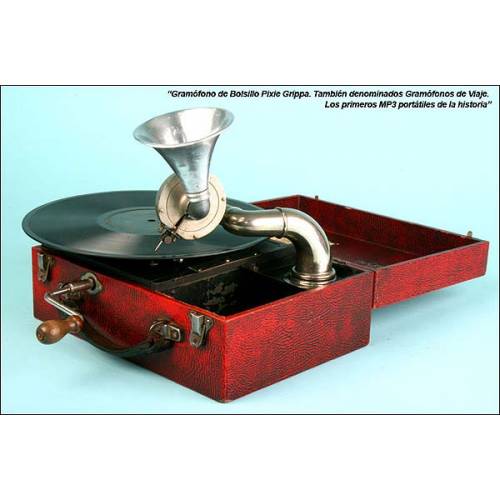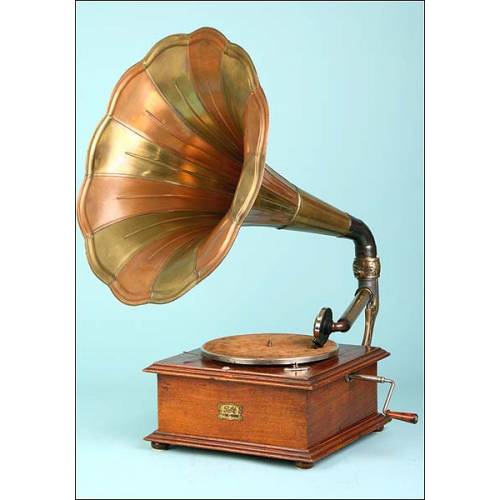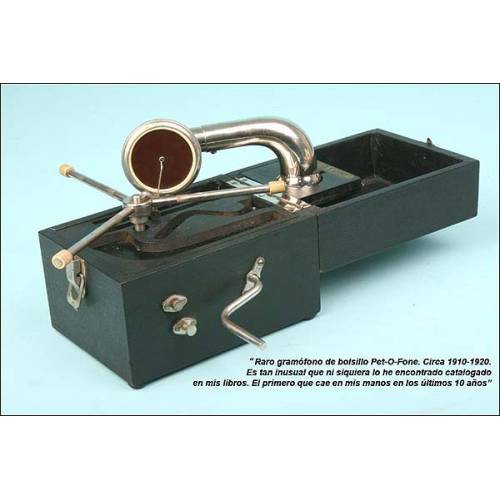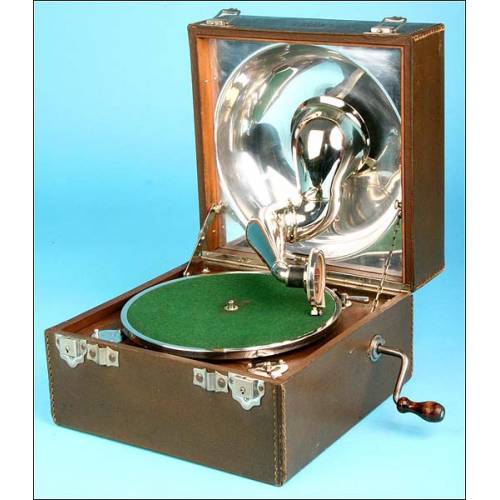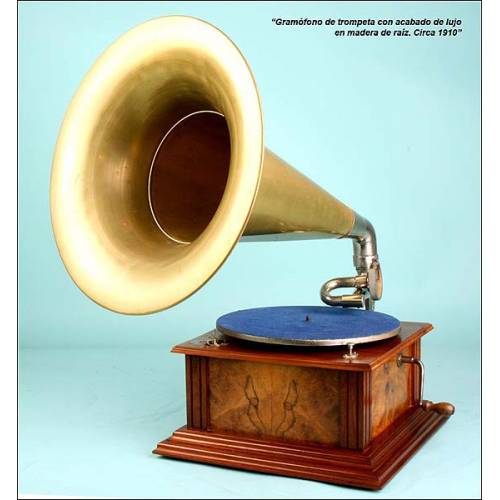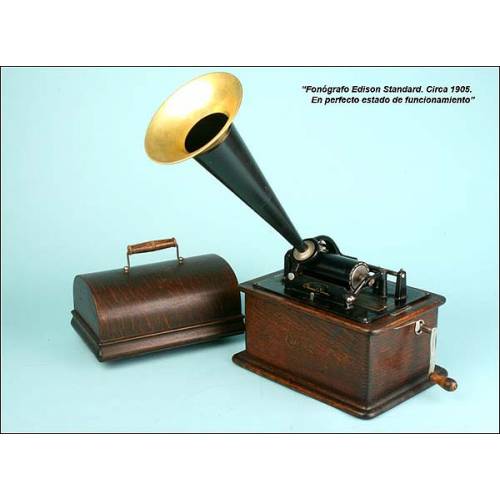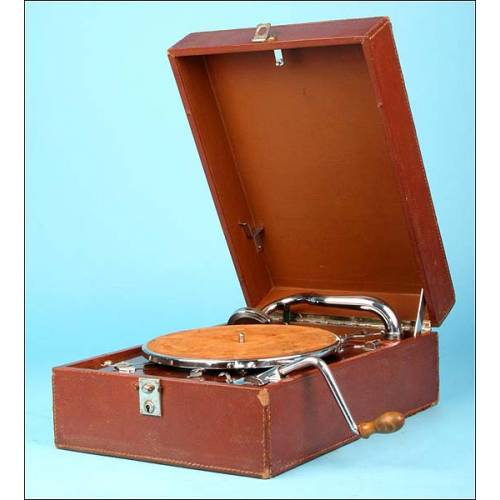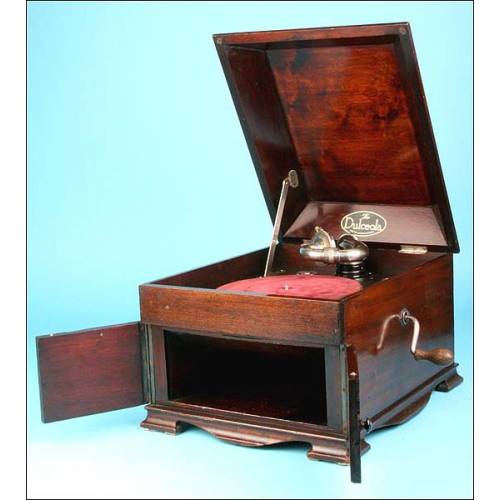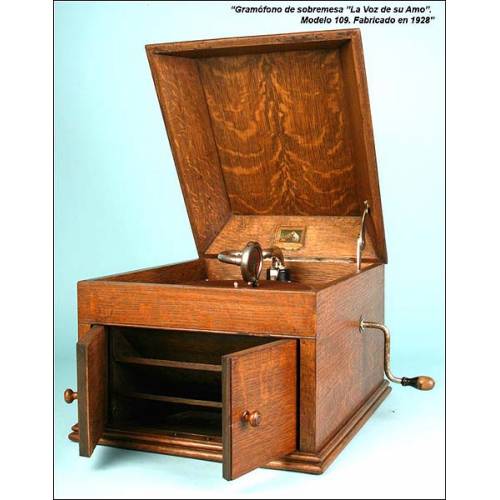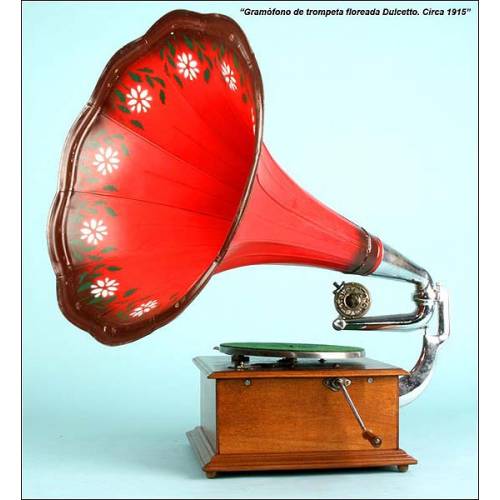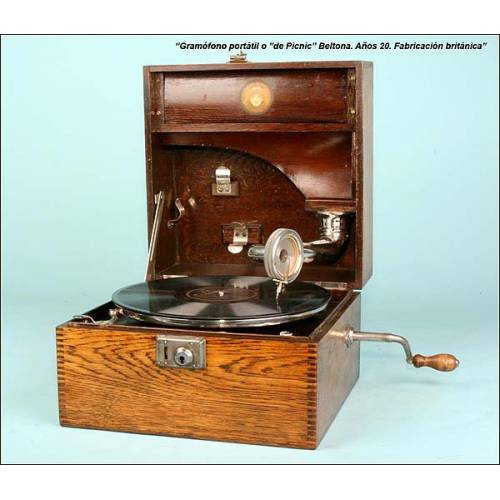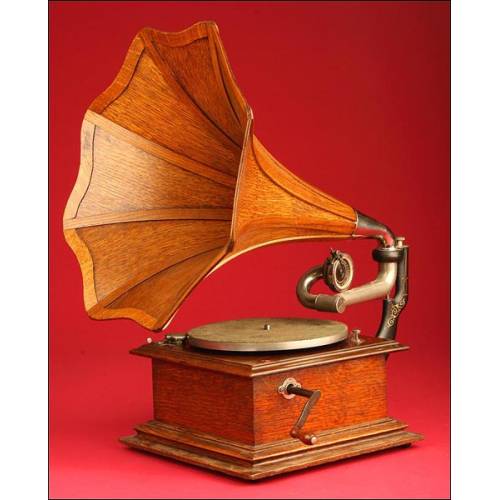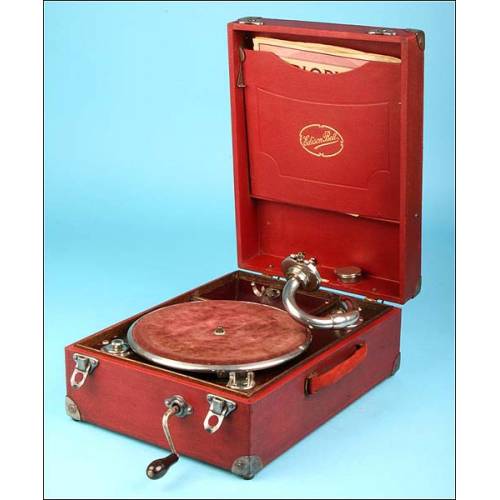D-120
Antique Odeon Gramophone - Phonograph. Inlaid Decoration. Germany, Circa 1915
Gorgeous original Odeon gramophone with marquetry decoration. In great condition and working order. Decorative and with a fine sound.
Sold!
Beautiful antique Odeon gramophone-phonograph with inlaid marquetry decoration, made in Germany in 1915 and boasting a lovely design. This is quite an original piece which combines an elegant wooden box with a brightly colored horn. Moreover, the gramophone works really well and provides a quality sound, loud and clear. All parts are original with the exception of the nut that holds the horn pin. It's just that nut. The pin is original and typical of Odeon gramophones. The motor has been revised and tuned in order to guarantee an optimal performance. The box is made of solid-mahogany wood, with the sides decorated with marquetry panels. The decoration includes different types of wood and mother-of-pearl details at the center. One of the pieces of mother-of-pearl has been lost (left side), while the others have been preserved. At the base we can see a small ancient reparation which cannot be retouched in order to preserve the original varnish. At the top there is a circular bone-colored plate embedded in the wood, with the ODEON brand name and logo (a classic-style building). This image is also engraved in the speed selector, while the brand name is engraved in the reproducer too. The arm that connects the reproducer and the horn is made of silvery metal and bears the engraved serial number A13857. Special mention must be made of the outstanding Morning Glory metal horn, painted with a dark-blue enamel in different shades. Inside the finish mixes different colors (yellow, orange, green and blue) which create a flower-like effect. Any lover of antique gramophones and beautiful pieces will appreciate the aesthetics and good working order of this antique Odeon gramophone with marquetry decoration, as lovely as original. Dimensions: Box: Side: 18.4 in / 46 cm. Height: 7.6 in / 19 cm. Horn: Length: 24 in / 60 cm. Mouths Width: 24 in / 60 cm.History of Odeon Gramophone Company Odeon emerged in 1904 as the registered trademark of the International Talking Machine GmbH, 24 Lehderstrasse, Berlin. The company was founded by Max Strauss and Heinrich Zunz with financial backing from Frederick M. Prescott. Essentially, like all early companies, it existed to sell talking machines (Gramophones) into the domestic market. For most early companies, the manufacture of records themselves was not the first consideration, but it was found necessary in order to increase the sale of machines. In 1904 Odeon launched the first double-sided gramophone records. In 1909 it created the first recording of a large orchestral work and what may have been the first record album when it released a 4-disk set of Tchaikovsky's Nutcracker Suite with Hermann Finck conducting the London Palace Orchestra. That same year Odeon became a part of the Carl Lindström Company, which also owned Parlophone, Fonotipia and other labels. The Lindström company was acquired by the English Columbia Graphophone Company in 1926. In 1931 Columbia merged with Electrola, HMV and other labels to form EMI.

